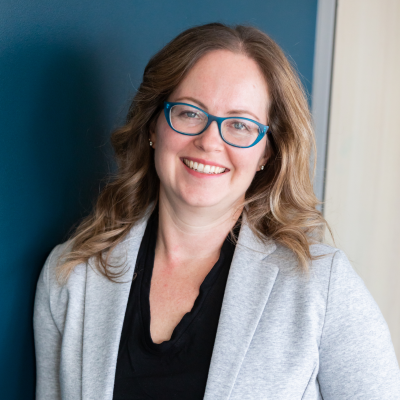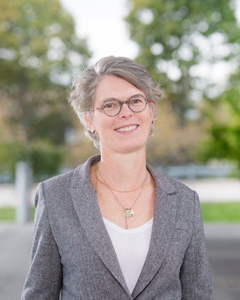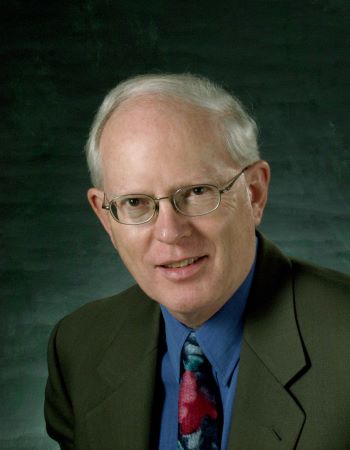Using AI to create solutions for businesses and government: Q&A with Nicole Janssen, CEO of AltaML
 Nicole Janssen (photo at right) is an entrepreneur and leader in artificial intelligence. As the co-founder and co-CEO of AltaML, a developer of AI-powered solutions headquartered in Edmonton with 4 offices across Alberta and Ontario, she plays a crucial role in steering the company's success.
Nicole Janssen (photo at right) is an entrepreneur and leader in artificial intelligence. As the co-founder and co-CEO of AltaML, a developer of AI-powered solutions headquartered in Edmonton with 4 offices across Alberta and Ontario, she plays a crucial role in steering the company's success.
Dedicated to promoting global education on responsible AI, Janssen has earned recognition from the RAI Institute. Her expertise is sought by provincial and federal governments for industry input on AI innovation in Canada.
In 2023, her contributions were celebrated with the Lifetime Achievement Award for Woman in AI of the Year and recognition as one of North America’s Top 25 Women of Influence. Most recently she was awarded the King Charles III Coronation Medal for her contribution to Canada.
Before co-founding AltaML, Janssen established Janalta Interactive Inc. and Stratus Holdings Inc. She currently serves as a director at Edmonton Unlimited and the Canadian Council of Innovators. Connect with Janssen on LinkedIn.
Some of AltaML’s accomplishments include:
- Tackling 450+ use cases.
- Partnering with 100+ organizations.
- Seven graduated ventures so far from the AltaML Venture Studio.
Since its founding, GovLab.ai powered by AltaML, the Government of Alberta, and Mitacs, has achieved:
- $32.5 million annual potential return on investment from the solutions built in GovLab.
- Six AI projects helped fully through the process from identification to being in day-to-day use, with 20+ projects at different stages.
- 67 Unique Student Associates, of which 18 have completed multiple terms with GovLab.
- Of these 67, 63 (95 percent) have either been employed or returned to school since leaving GovLab.
- 36 have been hired into full-time equivalent or internship roles with GovLab or elsewhere (54.5-percent employment rate).
- Seven are currently completing their first term with GovLab.
- Only three Student Associates have left GovLab and continue to actively search for employment.
Janssen, in a Q&A with Jacqueline Robins, writer and researcher for Research Money, discusses her history of entrepreneurship in AI and machine learning, the goals and challenges the company has experienced, her experience as a woman in AI and advice for young women interested in careers in AI, how AltaML measures ethical AI use in GovLab.ai, the GovLab.ai initiatives she’s most proud of, and her vision for the future of AI and machine learning in Canada.
R$: You have a rich and diverse history of past entrepreneurship. How did your past experience shape your decision to get into machine learning and artificial intelligence in 2018 before it was cool?
NJ: Well, we were actually in a business that we had been reading about [that] was going to be disrupted by AI. We were in the digital media space, and we produced a lot of content on a daily basis, and we had read about this technology that eventually became ChatGPT. And we thought, “Wow, imagine if we could generate some of our content algorithmically and have it done perfectly for SEO (Search Engine Optimization),” and all of those things. That would change the game for our business. And so we started looking into that, and we went to the local university here – Amii, the AI Institute at the U of A [University of Alberta] – and started working with them on a research project. [We asked ourselves,] “Could this be done?” And the research project – it went on for a while, and it was essentially, “Yes, this could be done.”
At the research stage, that's kind of what you get. You don't get a built solution. And so then we [thought,] “Okay, well, great. So we know we can do it. But how?” So then we hired some local talent out of the U of A – [it] was news to us how incredible the U of A is for machine learning talent. That was something as a local, I'm embarrassed to say I knew nothing about. And so we hired this talent and started trying to solve this problem. Obviously, we were hundreds of billions of dollars short on what we would need to actually solve this problem. But [in] the process of going through it, we could see okay, if we are an agile tech company that can move really quickly, and this is really hard for us to figure out, think about the industries and the organizations where AI is really going to be impactful, the ones that have a significant amount of data to leverage and be able to create these very powerful solutions. How are they going to do this?
And so we started, frankly, working with a couple companies that were owned by people that we knew to help them. And all of a sudden, AltaML was born. And we started that research project in 2016 and incorporated AltaML in 2018. So it was really just about seeing an opportunity and saying, “We really don't know how to do this, but there's an opportunity here. And so let's take it.”
R$: What goals did you set for AltaML when it was first founded, and do you feel that you've made progress on these goals today? Did your goals shift alongside the rapid transition to AI in recent years?
NJ: We have always said that our mission is to elevate human potential with applied AI. And so there's a couple pieces to that statement.
One is that the work that we do elevates human potential. We aren't going to be doing nefarious things with AI. And then we're also not going to be doing research. We're going to be applying the research that exists and really [be] focusing on getting AI solutions built and in the hands of users. And so over time, what that meant at different stages of the business has shifted a little bit. But that mission has never changed. And our business model has never really changed either, where we work on one side of the business, doing services for large organizations to build solutions that are custom using their data and leveraging that data to address their business problems specifically.
And then, on the other side of our business, we're a venture studio. And so we spin off and become the technical co-founder to different ventures with AI software at the core. So our business model hasn't really changed. Our mission hasn't really changed. But we recently actually started saying, “How are we truly knowing we're elevating human potential?” That's a hard thing to know you're doing. And so we've actually come up with a brand new framework that we're implementing, where we're actually going to be counting what is the impact to people, prosperity and planet that we are making in each of these projects. Not just what could they do, but what are they doing? Because a lot of investment goes into AI to build things and then they never get operationalized. Because the operationalization is very challenging. There's a lot of change management that has to go along with that.
And because there's still so much fear around AI, often things get dropped off. You hear a lot of stories about wasted investment in AI. And it's not that the solution isn't a good solution. Often, it's that they couldn't get it operationalized. And so hopefully, at some point, that wasted investment is no longer wasted because they are able to operationalize what they've built. But we've really focused [on] if we're not actually getting it in the hands of users, if we're not actually making an impact to people, prosperity or planet, we can't say that we are elevating human potential. And so that's a new thing that we've added in how we measure our success.
R$: Conversely, what were the biggest challenges in building AltaML? And did the shifting AI landscape exacerbate these challenges or help to alleviate them?
NJ: You know, some of the biggest challenges for AltaML were some of the same challenges you face in any business and startup: creating a culture that leads to success [and] honing in on a product or service that resonates with your clients. So those things are always hard, and they were hard for AltaML, too. And they continue to be hard. Those are things you don't ever stop doing.
But what I found different about AltaML – being in this space [rather] than other businesses I've had – is the amount of education that has to go along with it. Because of where we are as a society, about our understanding of AI, both the opportunities and the risks, there is a lot of education that has to come with that process. To get something into the hands of users, a big chunk is about bringing people along and educating them along the way.
I find that the other thing that, with the changes in AI, that's a little bit different is the newest thing that's come out is always the big flashy thing. Everybody calls us and wants to talk about that. And I love that the uses of machine learning that we were leveraging – [that] only [a] mere two years ago were the only ones – are now called the classic methods. Which I laugh at, because the rate of adoption of those is still so small. Even if we didn't have the agentic capabilities and the generative AI, there's so much potential with the classic methods that we really try and focus on knowing what is out there, having the capabilities in our team to leverage all of those things, but really helping our clients not fall in love with the latest thing, but rather looking at the problem and truly understanding the problem and solving that problem with the best and most effective tool. And sometimes that's not even AI. But you have to solve your problem – your business problem – not just build AI to build AI.
R$: You were awarded the Lifetime Achievement Award for Woman in AI of the Year by Women in AI of North America. What has your experience been as a woman in AI? And what advice would you give any young women hoping to build a career in artificial intelligence?
NJ: There's not a lot of us women in AI, unfortunately. I hope that that changes over time. and I hope that I'm a part of that because even when I started as a CEO of an AI company, I'll be honest, I looked out there for traits of tech CEOs – the best, most successful traits of those CEOs. And so many of them didn't resonate with me. Because that's not my leadership style, because they were all based off of men. And I tried to emulate some of those things at the onset, and it was a complete disaster because it wasn't who I am. And once I figured out that I should leverage the strength that I have and be authentic and vulnerable, and [that] that's the best kind of leader I can be, then I really saw a real change in my leadership.
But I will say that many times along the way, I've doubted myself in the process. And, some people talk about that as a negative thing. And I actually think that that's what makes me one of the best. And it's because I do doubt myself. I constantly am wondering, “Could I be doing this better?” I don't sit back and think, “I've got this; I'm exceptional at this. I don't need to improve.” So I do think that that's a big thing that I would want any woman leader to think about, but the doubt isn't necessarily a bad thing. You should lean into that and leverage it and use it for good.
But the best advice I ever received, which I can't claim as my own, was from Richard Branson [English business magnate who founded the Virgin Group]. I had the opportunity to meet him, and he said to me the thing that he followed throughout his life was when an opportunity came up and it seemed interesting, his advice was to just say, “yes,” [and] figure out how to do it later. And I have often thought back to that advice in those moments of, “Do I have the skillset for this? Should I be doing this? Should I say ‘yes’ to this?” And I often say “yes.” And I do think that that has made a big difference in my career.
R$: What inspired AltaML to co-found the AI lab for government, or GovLab.ai, alongside the Government of Alberta and Mitacs? What needs does the innovation hub hope to meet, and how can AltaML help make that happen?
NJ: We did a small project with the Government of Alberta a few years ago, and we were so impressed by the types of problems that could be solved in the public sector. And so we got together with some different ministers and said, “How do we make this bigger? And how do we do this in a way that really allows the government of Alberta to leverage the power of AI?”
Because the traditional procurement that happens – in governments of all levels is – you decide what that end state is going to look like. You put out the RFP [Request for Proposals], people respond, companies respond, and then you must fulfill the requirements of that end state. The problem with AI is you often can't set the end state at the beginning because you don't know all the variables to make those decisions until you get started. You also need the ability to be a bit agile and shift as you start to learn more once you're diving into that data. And so we tried to think about that problem and say, “How can we leverage AI? We're going to have to do this in a different way.”
And so that was how we established GovLab.ai: very much a collaboration between ourselves, the government of Alberta and Mitacs, and the goal really is first, leveraging AI and data within the government to create a more effective government; it's also allowing for the coordination across departments and all levels of government. So it's not just the provincial government, but our municipalities have joined in as well. And they're all able to leverage the work done within GovLab.ai. If we build something for the City of Calgary that is very valuable for the City of Edmonton, why should both of those organizations pay to build that from scratch? Instead, let's all leverage the IP that we're building here together. And so that's how that's working, and then we're learning from all the different departments and levels of government.
And then the other aspect of it was wanting to grow the talent pool in the ecosystem. And that's very much where Mitacs comes into the partnership in that we leverage interns along the way throughout – every quarter, we bring in new associates to do some of the work alongside the team to upskill the ecosystem and create a talent pipeline for all of our partners that are working within GovLab, as well as ourselves, but also [to] turn out some incredible talent who've had great experience, learning about how to actually integrate AI in the real world. The program has been so successful that we receive thousands of applications for only a hundred spots every year. And these are some of the most sought-after career titles that are often incredibly hard to find, and we are just flooded with applications because of the reputation of the program. So we're super proud of that.
And then the last kind of goal around that is the desire to leverage the IP that's being built and create a revenue stream back to the government. So they allow us, as a company with a venture studio, to license the IP from the government for a certain amount of time and commercialize it, and then the government will receive some of those revenues back. And so in the end, the goal is that once these begin to be commercialized, the Government of Alberta can have a self-sustaining AI program where they're getting all of these benefits, but it's paying for itself.
R$: GovLab.ai is powered by ethical artificial intelligence. What does ethical AI mean to you personally? And what benchmarks does AltaML have to measure the ethics of its AI use?
NJ: So when we think about ethical AI at AltaML, we've come up with a set of responsible AI principles. And we look at every project that we do at the use case level. You can't look at it at the company or organization level or the industry level because it's very easy to say, “Well, that industry isn't ethical.” But when you actually look at the use case, you might be doing something that is reducing carbon footprint or whatever it might be. So we really focus on each use case. Does it meet our RAI (responsible AI) principles, which are privacy and data protection, accountability, safety and security, transparency, inclusivity, fairness, awareness, and empowerment? And so we have different ways that we look at all of those things, not just at the onset but all the way through the project. We continue to check back. Are we still fulfilling our principles of RAI? And if we are, then that, to us, is producing ethical AI because my ethics and your ethics might look a little different. And so we often think if it meets our RAI principles – our political views, or our beliefs about certain things, our morals, we can't align on those necessarily – but within AltaML, we're very much aligned on our RAI principles. And that's how we measure our success in that area.
R$: Which Govlab.ai initiative or initiatives are you most proud of and why?
NJ: So there's two projects that are – they will probably forever be my favourites. One probably sounds really boring, but the impact was huge. And then the other, it can resonate with everybody.
It was one of our early projects, around wildfires, where we now have, in the hands of duty officers, the ability to predict a wildfire with 80 percent accuracy 24 hours in advance. that allows the right resources to be in the right locations at the right time. Obviously, we can't make that fire not happen, but if we have people and equipment in the right places, that can make a big difference on the size of the fire and the impact that it has. We're actually growing that solution to now be able to identify the fuel grid. So how many diseased trees are in this area? How many dead trees are in this area that are significantly more fuel[-intensive] than a healthy tree? And how can we help the province create prevention ahead of time in those areas that are most vulnerable? So that's a project that we're pretty excited about. As we all breathe in smoky air every summer, we know the impact that that project can make and will continue to make.
The second one is called safety codes. And again – [it] sounds boring, but there are all of these safety codes that exist that have to be followed. And there's a team at the government that answers emails about safety codes and companies would email in having a question – often they couldn't move forward in whatever they were doing, building a project, et cetera, until they had the answer to this question. And the questions were quite in-depth. So they needed to hire very well-trained engineers to answer these questions. Now you can imagine that might not be your dream job of getting these safety code questions and reviewing the safety code and responding to emails every day. They had these highly trained individuals doing work that, frankly, wasn't very sexy. Now we've been able to create a model that will pull that information and respond. So it's reduced the response time from several weeks down to two minutes. And the only reason it's two minutes rather than instantly is because we keep a human in the loop to review the response before they hit send. That means that that company that's asking that question gets back to work immediately, [and] doesn't have to wait for weeks for a response. It also means that all these individuals – now they're able to leverage their expertise in other ways, other more effective ways for the government than doing it this way. And so everyone seems to be really happy. And there's a lot of areas of the government that have that same type of situation where there's very complex documents, and a lot of them that you're having to analyze to give a response. The opportunity to grow that project throughout all levels of government is significant. So we're pretty excited about that.
R$: Where do you see artificial intelligence and machine learning in Canada in 10 years’ time? And how does AltaML fit into that vision?
NJ: Canada has been investing in AI for decades – significantly. That's why we have our three AI institutes across the country. We have incredible research; we turn out world-class talent at a rate that makes most countries incredibly jealous. But we aren't leveraging it beyond that. We're not commercializing, and our industries aren't adopting the technology at a rate that will keep us competitive. And I'm hoping that Canada really leans into this capability. It is something that I think most people don't even know how incredible we are with AI, and I want to get the word out. I want everybody to know just how powerful we are in this area. And that I know that we can grab the title of being the global leader of responsible AI. I want everyone to know that if they buy AI solutions from Canada, they're buying ethical, responsibly built AI solutions that they can trust.
That goes very much along with who we are as citizens of Canada and who we've always been as a country. And so that's my dream. I want Canada to achieve that goal. And I am going to do everything I can to tell as many people about it, but also, it's why I sit on the Government of Canada's AI advisory council. It's why I take part in those things because we have a potential, and we have got to grab a hold of it and make it happen.
R$
| Organizations: | |
| People: | |
| Topics: |
Events For Leaders in
Science, Tech, Innovation, and Policy
Discuss and learn from those in the know at our virtual and in-person events.
See Upcoming Events
You have 0 free articles remaining.
Don't miss out - start your free trial today.
Start your FREE trial Already a member? Log in
By using this website, you agree to our use of cookies. We use cookies to provide you with a great experience and to help our website run effectively in accordance with our Privacy Policy and Terms of Service.





